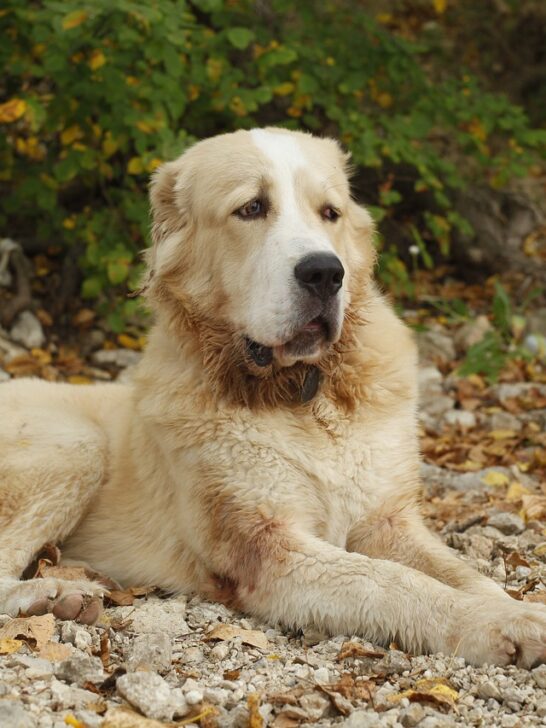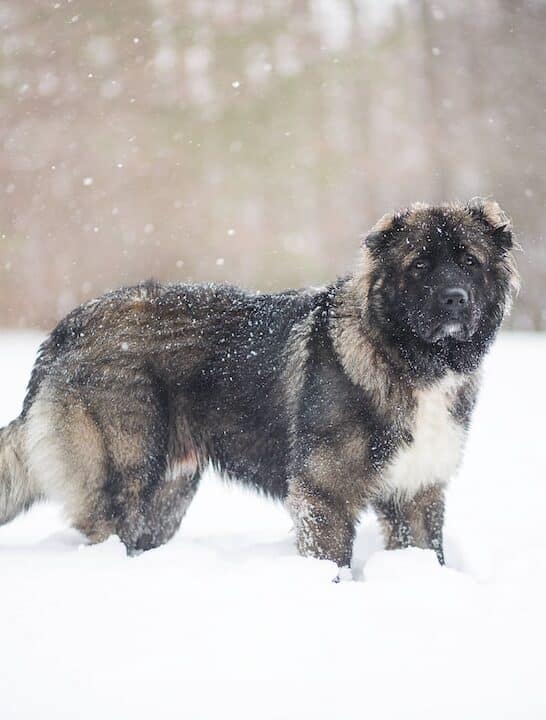Hiking With Your German Shepherd – A Preparation Guide
Many dog owners find that having a dog helps them stay active and ensures they go outside on a regular basis.
But what if you’re a fitness enthusiast who enjoys long, challenging hikes? What if adventure is already a huge part of your life?
While not every dog can handle that kind of intensity, hiking can take on an element of never-ending fun if you take your German Shepherd along with you.
You can train the active breed to get it used to the energy-intensive exercise, so you’ll always have company while keeping your dog stimulated.
Read on to learn how you can explore the best of nature with your furry friend, how and when to begin training your German Shepherd, important equipment to bring on your hike, and how to keep your dog safe and healthy while out on your hike.
Is It a Good Idea To Take Your German Shepherd Hiking?
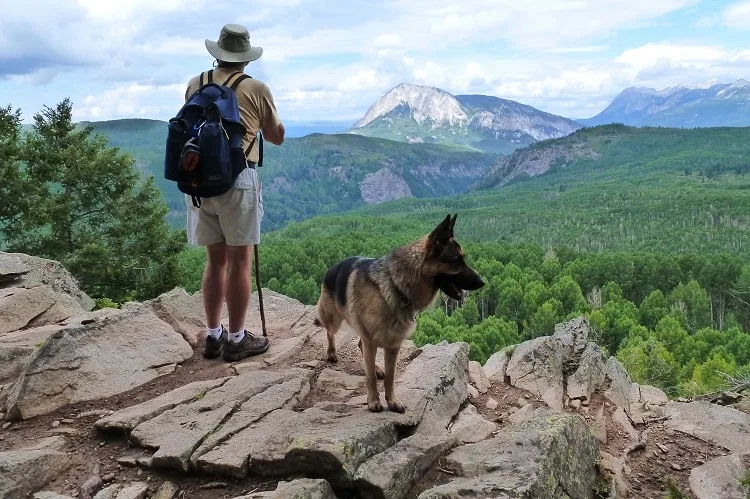
Yes! This wonderful breed makes for a perfect companion for a hike.
German Shepherds were bred to be working animals for herding sheep, and they were also often put to work as guard dogs.
They have a boundless supply of energy—something you can enjoy if you’re active too, but it means these dogs have the potential to become aggressive without enough exercise.
They need adequate physical and mental stimulation to release their excess energy. Without it, they may begin to act out in a high-strung and mischievous manner.
This is where hiking can help!
Hiking is an energy-intensive form of exercise that will keep your dog busy for long periods of time and provide it with lots of mental and physical exercise.
Many dogs enjoy long hikes on rough terrain and complex trails. And while your dog reaps the benefits of all that exercise, you’ll have company on your walk!
At What Age Can a German Shepherd Start Hiking
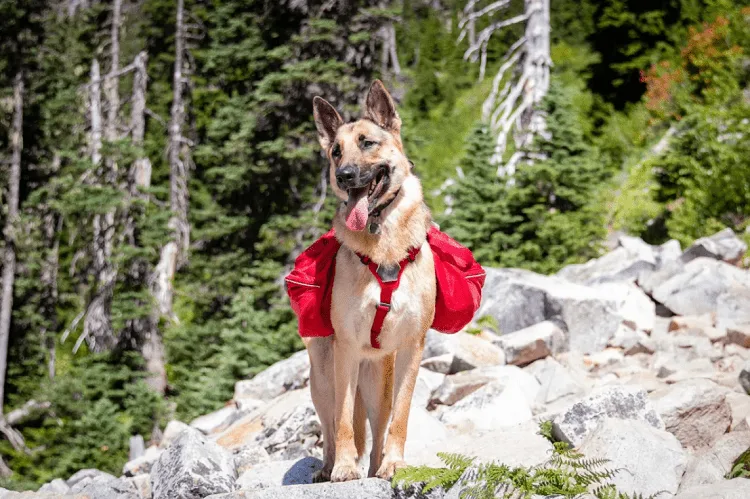
German Shepherds are a large, agile, energetic breed, but not all of them will make a good hiking buddy.
German Shepherd hiking should be considered only after their growth plates are closed, which is at or near the 1-year mark.
Going on a hiking adventure before that is a bad idea, as it can put too much stress on puppies’ skeletons, causing hip and joint injuries.
Hiking can be equally stressful for senior dogs, as they can be quite fragile and more prone to the same health issues.
You also shouldn’t go on long hikes right off the bat—err on the side of caution and stick to short trails to help your dog get used to the activity. Maybe even try some Kayaking.
You can begin to warm up your German Shepherd puppies to hiking at the 8-month mark, but only for short, one-mile excursions.
How to Teach Your German Shepherd to Behave on Hikes
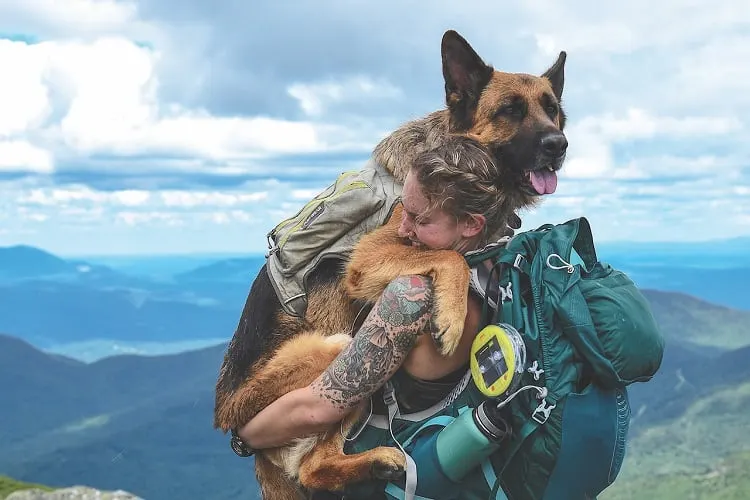
German Shepherds are energetic dog breeds, but that doesn’t mean they have hiking in their blood. You will have to get them used to the activity.
In the beginning, German Shepherds may be spooked on the trail and refuse to walk forward or get startled by wildlife or other hikers.
This is why it would be a good idea to start with short walks before going on a long hike. That way, you can slowly teach your pet how to behave on a hike while building its endurance.
You can slowly increase the distance of each walk as you become used to hiking long distances together.
Basic training is crucial, especially if you want to take your German Shepherd on an off-leash trail. You must keep your dog away from bobcats, bears, and other wildlife animals in the great outdoors.
When training your German Shepherd, make sure it:
- Knows how to behave when it comes across other people and animals.
- Understands verbal commands and hand signals.
- Knows how to control its impulses despite distractions.
- Is comfortable with leash training, so you can remain in control.
Thorough training will make your dog the perfect hiking companion in no time!
Equipment and Accessories Needed
Are you planning to go on a hike with your fur-ever friend?
The list below will help first-time dog owners and experienced paw-rents ensure they have the necessary hiking gear to enjoy a hassle-free hike with their German Shepherd.
Dog Food and Treats

Hiking takes up a lot of energy, so bring a bag of dog food to keep your dog’s tummy full and replenish energy for a top-tier adventure.
If you’re taking your dog on a strenuous hike, bring a pack of your dog’s favorite protein-rich treats to give it the positive reinforcement needed to keep pushing forward.
Do not feed your dog a big meal before a hiking trip, as it can lead to lethargy and vomiting. Give it a small meal and make up for it with treats and dog food en route.
First-Aid Kit
Hiking trails—like any other physical activity—can lead to injuries.
Carry a first aid kit with everything you need to patch up cuts and bruises from branches, rocks, and other hazards on the trail. Keep both your dog and yourself safe while you’re deep in the woods.
Harness
A well-fitting, fully adjustable walking harness will help you keep control of your dog during the hike, and will be especially handy when you’re hiking steep inclines.
I.D. Tags
If your dog doesn’t already have identification tags on its collar, you should definitely attach one before you go on a hike. If your dog runs away or wanders off, anyone who finds it will know how to reach you.
Leash
Use a strong, high-quality leash that is comfortable to hold onto and will not break or get tangled easily. You can also use a hands-free leash for the freedom to walk or run on the trail.
Pet GPS Tracker
Get a GPS tracker for your German Shepherd, and you’ll never lose track of it again. With a bit of tech, you won’t have to worry about roaming the woods to find a dog that has wandered off.
This added security measure comes at a relatively high price, but its benefits are definitely worth the splurge.
Poop Bags
Cleaning up after your dog is a basic requirement wherever you go, even when you’re hiking.
Use leak-proof bags for all your scooping needs. Plastic bags work best, as you won’t have to worry about causing a mess in your backpack.
But if you’re trying to be kinder to the environment, biodegradable, compostable poop bags are great, too.
Paw Protectors
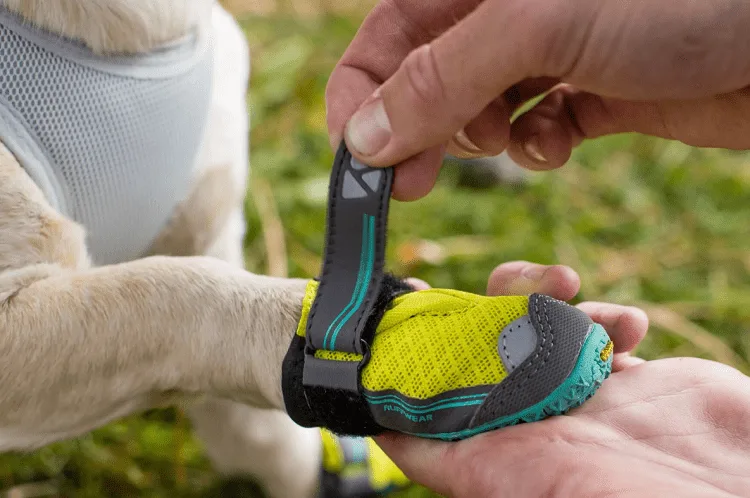
The terrain in public parks, sidewalks, and gardens differs significantly from hiking trails. It is thus crucial to invest in a good pair of paw protectors for your hiking buddy.
They will protect your dog’s paws from sharp rocks, branches, and other potential hazards on the trail. Paw protectors also provide excellent grip and stability.
You can also use dog paw wax as an alternative. Just choose one that will protect dogs from nature’s harsh elements, and you’ll be good to go.
Quick-Dry Dog-Specific Towels
Bring a lightweight and durable towel to keep your pet clean and remove any traces of sweat and dirt from its coat. The towel can double up as a blanket to sit on and relax on the trail.
Note that German Shepherds are sensitive to hot weather. Schedule your hike when the weather is cool and there is a healthy breeze, but remember cold weather can also take a toll on dogs.
Water Bowl
For a safe hike, you must take frequent water breaks. Avoid dehydration by regularly sipping from your bottle and carrying a high-quality collapsible dog bowl for your four-legged friend.
It is perfect for hydration on the go, as it easily folds up for efficient storage!
Signs of Tiredness
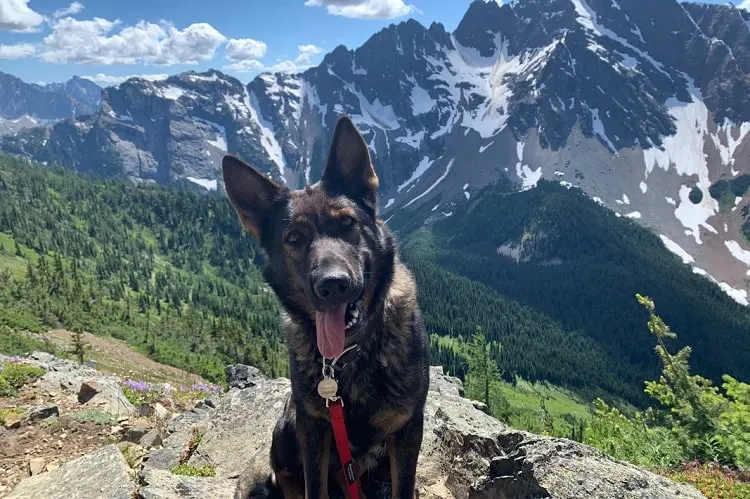
Once you’re kitted out with all of your supplies, you’re ready to go on your hike.
But remember, as a responsible dog parent, you must keep an eye out for any signs of fatigue during your hikes and trail adventures:
- If your dog is panting or drooling excessively, it could be overheating, dehydrated, anxious, or stressed.
- If your dog has bright red gums, it is likely trying to cool its body down by panting. This brings down its temperature by bringing blood (and its accompanying heat) to the surface. Bright red gums are more often than not an indication of heat stroke but can also indicate stomatitis and gingivitis.
- If your dog shows reluctance to follow commands or continue hiking, it could mean it is exhausted and needs a bit of rest.
If you observe one or more of these signs during your hike, stop immediately; pushing on may lead to health issues like muscle and joint problems in your dog.
Give your dog the rest it deserves before resuming the hike.
Final Word From Anything German Shepherd – Your Pawsome Dog Guide
German Shepherds are one of the most active dog breeds in the world. They have a seemingly endless supply of energy which will ensure they won’t have a hard time keeping up on hiking trails.
They make perfect companions on these adventures, but you must remember that German Shepherds also have their limits.
Take your pet for a vet visit before going on a hike to ensure it is in excellent health. You may also need to bring its medical certificates to enter certain national parks and trails, so make sure you come prepared!
As you enjoy hiking with your German Shepherd, be patient and keep an eye out for signs of overexertion and dehydration.
When you and your dog are comfortable, you can enjoy your hike and build a bond for life!
Resources:


















